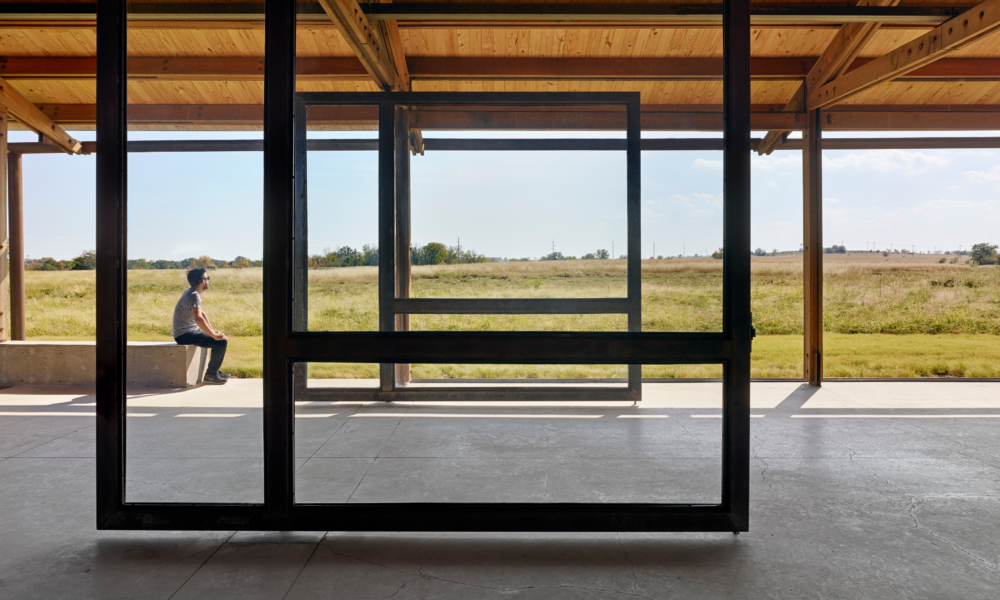All too often, our buildings do not give us the chance to connect with nature. Buildings with few or no windows, no fresh air, and views of something uninspiring, a wall or a parking lot, are all too common. Given that we spend 90 percent of our time inside, this means many of us are living the majority of our lives completely cut off from the natural world—in a sense, cut off from a part of ourselves.
As Biophilic Design gains momentum, gathering data about the health benefits of people connecting to nature is in demand. Much of the research findings on the health benefits of people connecting to nature is intuitive. If we were to awaken our awareness of how we feel when we are in vibrant and varied light, for example, we would not be surprised to see that research shows that patients in hospitals heal faster when in a room with daylight, or that test scores in schools improve when a classroom has natural daylighting.
Since Roger Ulrich published a study on hospital recovery rates being influenced by patients contact with nature in 1984, several other studies have shown the link between access to nature and productivity, which can serve as a proxy for health and well-being. Some of the studies, such as one published by Kate Lee and others in the Journal of Environmental Psychology1, suggests that even a 40-second spell looking at an image of a green roof improves focus and productivity. The wealth of research showing that exposure to nature improves productivity and creativity has not gone unnoticed by large companies such as Google, Facebook, and Amazon—all of which have implemented Biophilic Design and the exposure of their employees to nature in the design of their buildings over the past few years.
As we get close to the predictions that 70% of people live in urban areas, we will become more separated from nature than ever before. It is imperative that our buildings bring nature and nature’s principles inside, that they blur the boundaries between inside and outside, and allow us as inhabitants of this planet to fulfill our instinctual need for being part of nature. However, we have a plethora of buildings across the US that cannot ever provide any daylight and other elements of biophilic design to their occupants without significant retrofitting. Square buildings with large internal floorplates force thousands of people to be separated from the outside walls and be ignorant of the time of day, weather, or the smells and sounds of nature.

A plague of schools was built in the 1960’s and 70’s with the belief that a view of the outside world would be a distraction to learning. Classrooms without any natural daylight were not only legal, they were encouraged across the US. Globally, however, many countries had the opposite opinion, and the width of buildings was and still is limited to ensure that all occupied spaces have adequate access to natural daylight and views to outside. Our current codes support the belief that as long as air is circulated through ducts and fans and artificial lights are adequate, that access to daylight is not necessary. This approach to restrict such a basic human need will not be easy to change.
Without adequate codes to ensure that our connection to nature can thrive, we can shift building owners and developers to create buildings that achieve biophilic design by utilizing the wealth of health data to make a clear value proposition to employers whose largest expense is their employees. However, we cannot rely on research and studies alone – it has been 35 years since the first study linked daylight in hospitals to healing rates and yet in the last 35 years we have continued to build and remodel hospitals that restrict daylight to patients. Our buildings have a significant impact on our health and yet conversations about human health have not historically included architects, designers or real estate developers. How do we ensure that this critical health issue is addressed?
Like any change to and transformation of the status quo, we will need to approach the shift to Biophilic Design adoption using systems thinking approaches. All aspects of how we create our built environment need to change, starting with each of us awakening our connection to nature and starting to demand spaces that allow that connection to thrive. We should not allow our children to spend their days with no daylight or time outside when study after study shows that kids learn better, interact with other people more positively and have a stronger sense of self-esteem and hope with daylight. Together let’s transform our buildings, starting with each of us answering the question – How will I bring nature inside?
Header photo: Josey Pavilion; photo courtesy of Josey Pavilion
Notes
- Lee, Kate; Williams, Kathryn; Sargent, Leisa; Williams, Nicholas; Johnson, Katherine. Journal of Environmental Psychology, June 2015, Volume 42



